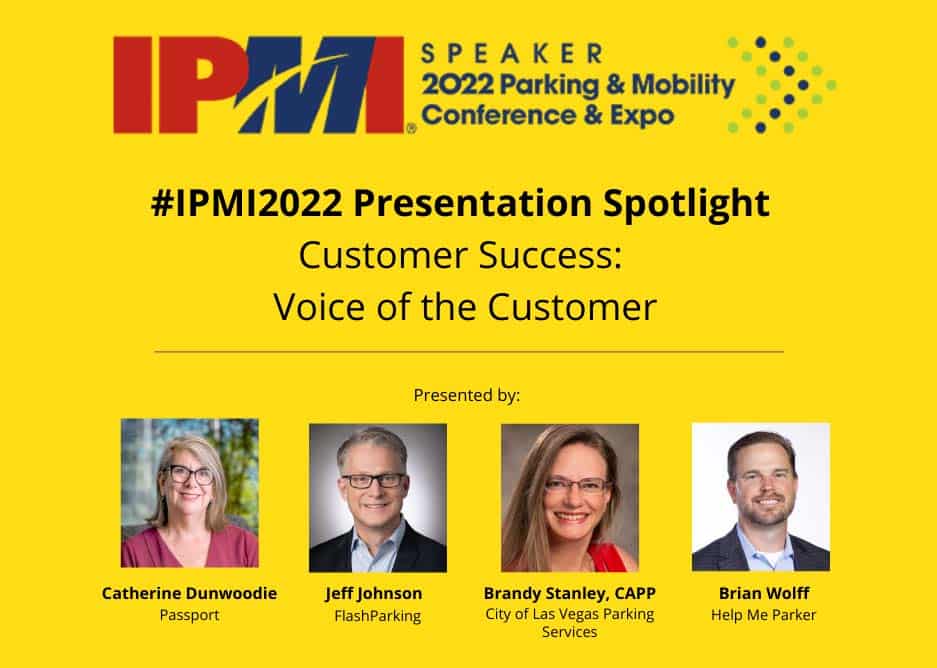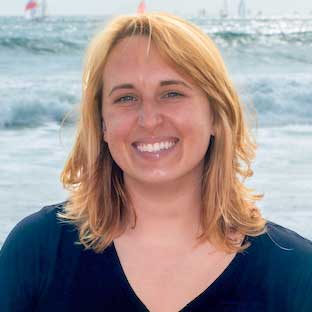8 Things We Learned About Customer Success at IPMI 2022

*Reposted with permission from the Ocra blog.*
This post is a summary of our takeaways from a stellar session at IPMI featuring Brian Wolff, Jeff Johnson, and Catherine Dunwoodie. We’ve done our very best to represent their insights based on our engagement with, and takeaways from, their discussion.
Three cheers to the panelists for a revelatory session!
Last week, a few members of our leadership team attended IPMI 2022 in New Orleans.
Top to bottom, it was a stellar show.
In addition to spending quality time with some of the industry’s best and brightest, we had the opportunity to attend some excellent educational sessions.
One in particular that made a big impression on us – as a fast-growing startup rapidly onboarding our partners onto Ocra Version 2.0 – was “Customer Success: Voice of the Customer”.
This dynamic panel featured Brian Wolff, President & CEO of Parker Technology, Jeff Johnson, Chief Customer Success Officer at FLASH, and Catherine Dunwoodie, VP Client Success at Passport, and was led by Brandy Stanley, Parking Services Manager for City of Las Vegas Parking Services.
This session really got our wheels churning, so we wanted to share our takeaways.
This article is our best attempt to distill the insights of these impressive industry leaders into 8 points that we’ll consult over and over again as Ocra grows and continually refines our end-user experience.
We hope you find them useful, too!
Takeaway #1: Customer Success Management (CSM) is a vital function.
We all know that it’s hard to win a customer, and it’s even harder to keep one.
CSM is a super strategic investment to make at any stage of your business’s development because you’re investing in customer loyalty.
One of the primary functions of a CMS team is to provide a great experience on the front end (what it looks and feels like to work with you) that turns a customer into a rabid ambassador for the brand.
CSM initiatives reduce churn and foster loyalty, which brings in new business through referrals and participation in compelling sales and marketing materials like case studies, testimonials, and more.
Takeaway #2: CSM teams don’t just solve problems; they unearth opportunities.
According to the panelists, CSM requests can generally be slotted into one of three categories: friction items, general support inquiries, or growth opportunities.
A high-performing CSM team doesn’t just apply band-aids; they navigate the customer to solutions.
As their compass, they use questions like “what are we doing to make our customers more efficient?” and “what does the customer want to do next and how can we be a strategic partner in that journey, increasing their valuation and making them a more successful enterprise?”.
Takeaway #3: You can consider your CSM team to be “human APIs”.
This is a useful metaphor (we heard it from Jeff Johnson!) because CSM connects the customer, one endpoint, to whoever they need within the organization.
CSM doesn’t necessarily sit on any one team. They represent the voice of the customer, extract the action item, and diffuse it throughout the entire organization.
CSM creates spaces, meetings, and convos where engineers, salespeople, executives, and more can listen and incorporate feedback into the business’s roadmap, sales strategy, and marketing tactics.
Takeaway #4: Excellent CSM people come from everywhere.
Human Resources, Sales, and Marketing are just a few of the many disciplines that lend themselves to CSM success. Anyone who is fanatically focused on the customer experience is an excellent candidate for this role.
The best and highest performing CSM people can listen to and ingest customer feedback and orchestrate a conversation with the right people.
The CSM team understands what the client wants to accomplish with the technology and the platform and can mobilize everyone to march towards the same goal.
Takeaway #5: CSM is different from Sales, and needs to be treated that way.
CSM is not necessarily a profit center, and therefore it needs its own compensation structure and KPIs.
A commission structure isn’t necessarily appropriate for a CSM team. The customer needs to know that they can have frank conversations with CSM and they’re going to “tell, not sell” (another JJ-ism!).
In meetings with the CSM team, the customer can be candid about what they need and feel confident that CSM isn’t going to pitch. Rather, they know they can rely on CSM to uncover areas of opportunity.
Takeaway #6: Bringing CSM into client convos early strengthens alignment.
“Alignment”… that’s the million-dollar word.
Friction can arise when there’s a fracture between expectations and commitments, which results from parallel conversations without full context. After all, it can be hard to keep track of who within an organization is having what convos with the customer.
CSMs point everyone towards the same north star and cultivate a culture of group ownership, breaking down silos and erasing the toxic and unproductive mentality of “X person owns Y client relationship and no one else can touch it”.
Takeaway #7: Client convos are most meaningful when coordinated by CSM.
These then become “value-add” conversations; in fact, CSM is a purely additive function.
Executive engagement is a popular business strategy, but it can die on the vine if there’s not a legitimate reason for executives to engage with the client. In this case, these interactions can feel forced.
When CSM leads these convos with customers, they can connect them with the products and the operational groups that create the solutions.
Then the convos become more productive, which incentivizes executives to engage at a deeper level.
Takeaway #8: CSM doesn’t just say “yes” or “no”.
Sophisticated, visionary clients can redefine your development flows and vision.
But the answer, even to this sophisticated client, isn’t always “yes”. It may be “not today”… or it may even be a “hell no”.
The best CSM people don’t just say “yes/no” and are content to leave it at that. They naturally try to find new paths to the outcome that the client wants to achieve.
They ask questions of the client such as “where are you today and where do you want to go?” and then figure out another way to get them there.
CSMs help calibrate organizations by weighing business priorities against initiatives requested by specific clients, which enables the business to allocate their build resources appropriately.
CSM is an essential function with its own success metrics and KPIs that support business growth in a meaningful and measurable way.
Throughout the entire duration of a relationship with a customer, customers need to have a team with whom they can be candid about where they are now and can navigate them to where they want to be.
We encourage you to reach out to the panelists to dive into any of these topics. There were many valuable soundbites, and we couldn’t jot ’em all down fast enough!
If you have insights into Customer Success Management or advice that you’d be willing to share with us, we’d love to hear them. Send us an email at [email protected].
*Reposted with permission from the Ocra blog.
The post 8 Things We Learned About Customer Success at IPMI 2022 appeared first on IPMI.
Sarah Becherer is VP of Growth at Ocra and a member of the IPMI Technology Committee.
- Sarah Bechererhttps://parking-mobility-magazine.org/author/sarah-becherer/April 6, 2023
- Sarah Bechererhttps://parking-mobility-magazine.org/author/sarah-becherer/May 4, 2023

The Power of Mentorship in Every Business
When organizations comprise themselves of leaders that possess the ability

Parking’s Bottom Line
How Enhancing the Customer Experience Pays Off

Data Driving Decisions
Business intelligence & KPI’s for predictive digital parking operations.







